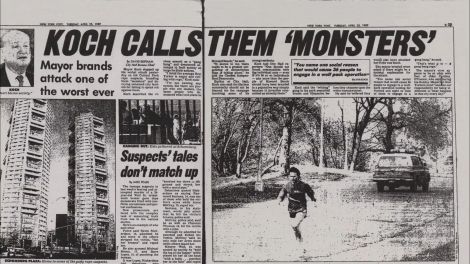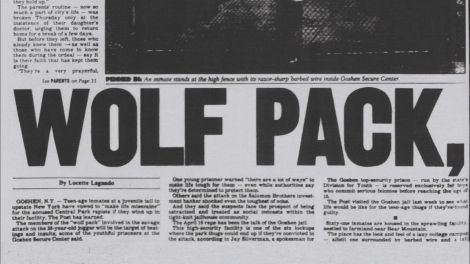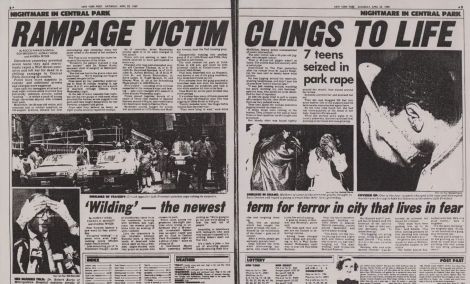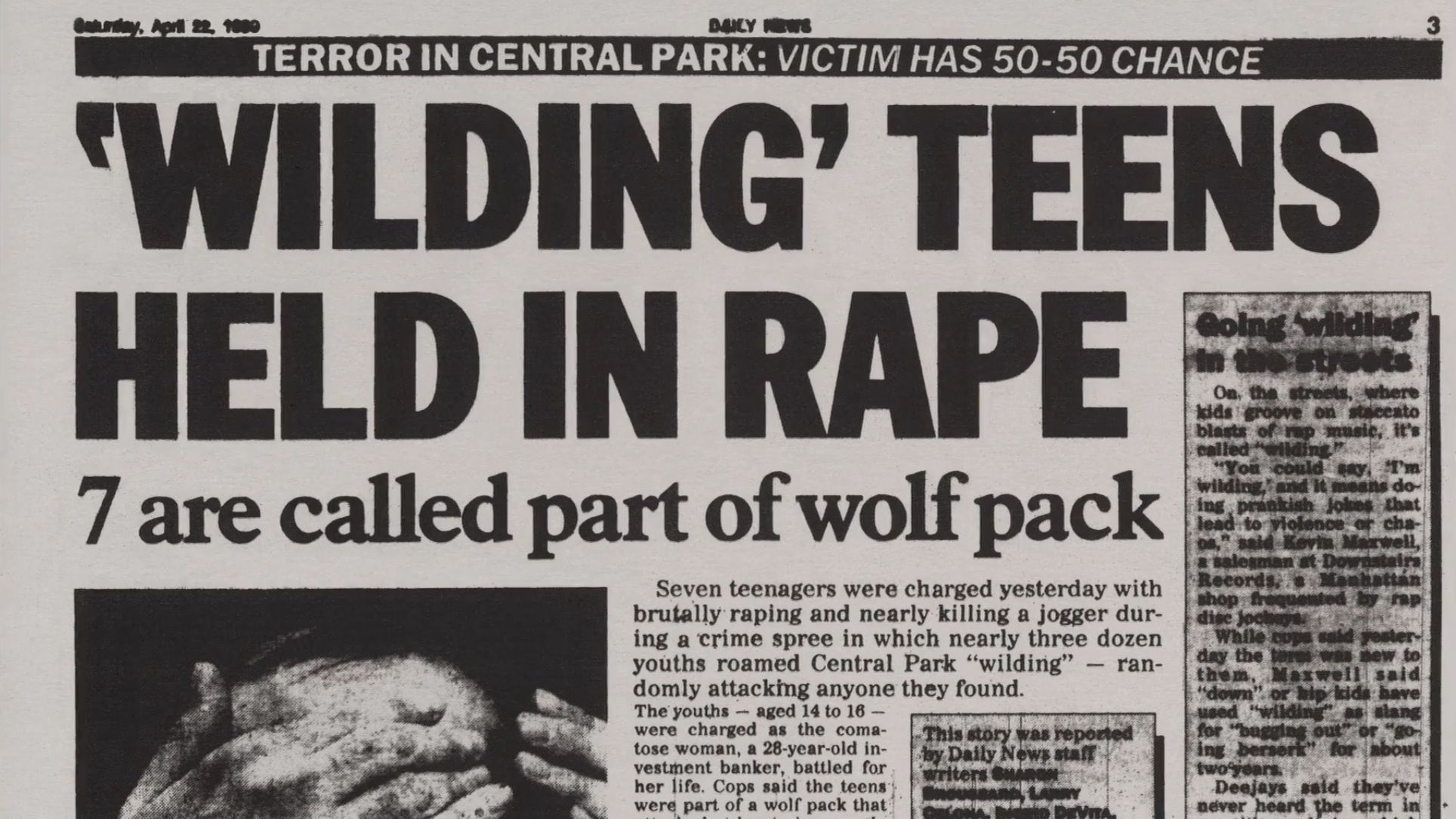The New York City men known as the “Central Park Five” will reportedly receive $40 million for their wrongful convictions and imprisonment after police falsely accused them of attacking and raping a white woman 25 years ago. It’s hard to imagine what financial amount, if any, could adequately repair what was taken from these five lives: Antron McCray, Kevin Richardson, Raymond Santana, Kharey Wise, and Yusef Salaam. They were just boys when they were arrested, the youngest 14; all of them of African American or Latino American heritage. They spent the rest of their teenage years in jail, one of them in the notorious Riker’s Island penitentiary.
They were exonerated in 2002 when Matias Reyes confessed to sexually assaulting the victim, Trisha Meili, a 28-year-old investment banker who was jogging in Central Park. Her almost lifeless body was found in the early morning of April 20, 1989. Police picked up the other five boys for the crime because they were part of a larger group of kids who were in Central Park that night causing other mischief — what the media referred to then as “wilding.”
The story leading up to their absolution is an instructive tale of how prejudice functions specifically in spaces where the general public is supposed to exist harmoniously with nature. The greenspace of Central Park wasn’t and hasn’t been a shield against racism and rape culture. In this instance, the park was used as an instrument for dehumanizing black and Latino youth, felon-izing their behavior in the process.

PBS – The Central Park Five
Stephen Mexal, an English professor at California State University, Fullerton, explored these themes thoroughly in the article, “The Roots of ‘Wildin’: Black Literary Naturalism, the Language of Wilderness, and Hip Hop in the Central Park Jogger Rape.” There, he writes:
Although it is impossible to identify any single reason for the false convictions, further research may be able to establish that the cultural panic engendered by wilding measurably contributed to the verdicts. The Central Park Jogger rape began as a horrific crime but became a multivalent spectacle in part because of an interpretive failure on the part of the broader public: an inability to read the word wilding critically, as a part of an ironic discourse interrogating the primacy of white civilization.
Before this crime, the term “wilding” didn’t mean much beyond kids partying — think Nick Cannon’s former MTV series Wild N Out. But for Central Park, the term adopted “a kind of chilling logic,” Mexal said in an interview.
“I suspect the word ‘wilding’ made many people remember about actual wilderness, violent and uncontrollable,” Mexal said. “Now, every right-thinking person knows that a 14-year old boy from New York is not a wild tiger. But for seemingly an entire city and maybe an entire country, that simple fact suddenly became very hard to remember one night in 1989.”

PBS – The Central Park Five
It’s clear today — thanks to Reyes’ confession and Ken Burns’ 2012 documentary, Central Park Five — that the kids weren’t just being tried for a crime against the woman, Meili, but also for crimes against nature, or rather this human-made natural enterprise called Central Park. Like weeds, the kids were wild, which meant they didn’t belong in this manicured landscape.
That park, and what it represented for genteel New York, seemed as much a victim in the minds of the gentry as Meili, based on the news coverage and analysis of the time.
The language used to describe the event testifies to this. Violent crimes were happening all over New York City at the time (six murders a day, according to Burns’ doc), but Meili is referred to as the “Central Park Jogger.” That label was created in part to shield the name of the sexual assault victim, a standard media practice. But that anonymity is not applied to the accused, who are normally named in the media, but in this case were known as the “Central Park Five,” when not the “Central Park Rapists” or “Central Park Attackers.”
District Attorney Robert Morgenthau said after two of the boys were convicted that this is “not a case of black, white, and Hispanic, but rather one of right and wrong and what happened in Central Park.” … Not even what happened to Meili, but what happened in Central Park.

PBS – The Central Park Five
“Tensions about who that space is for have been baked into the landscape of the park for over a century,” Mexal told me. Poor African Americans, and German and Irish immigrants were removed from their homes in the 1840s to clear the area where Central Park would be built. This particular area was “classified as wild because of the presence of an immigrant and non-white underclass,” Mexal wrote in his article.
Central Park was designed by Frederick Law Olmsted, an architect and nature conservationist who’s credited as the father of the public park system. He was also a journalist who reported on the evils of slavery, and a co-founder of The Nation magazine. Olmsted believed that parks should be public spaces accessible to people of all races, but the idea never took total hold. As the city’s black population grew since Olmsted’s time, particularly in those areas north of the park like Harlem, the park fell into disrepair and became a haven for crime. When the city started finally began making improvements to the park, to make it more welcoming, it left the northern parts unaddressed.
By 1990, Central Park was like a “demilitarized zone that connected the corporate, money-making, financial capitals of the city with the parts of New York that people were most loathe to go to because of the racial populations,” said William Jelani Cobb, director of the University of Connecticut’s Africana Studies Institute and a writer for the New Yorker, when I spoke with him by phone yesterday.
In our talk, Cobb recalled the simmering racial tensions he experienced living in New York City in the late 1980s, when two notable killings of black men shook the city — Yusuf Hawkins, 16, shot dead while beaten by a gang of Italian teens in Bensonhurst, and Michael Griffith, 23, killed while fleeing Howard Beach when a mob of white teens attacked him. These incidents and accompanying spouts of police brutality inflamed racial tensions, as captured for the nation in Public Enemy’s songs like “Welcome to the Terrordome” and cinematically in Spike Lee’s Do the Right Thing.
The media’s application of the term “wilding” for the black youth was like “a finger people used to point to the sum of everything that was going on with race (in New York City) at the time,” said Cobb. “With the Central Park case, it was hard to escape the racial conflagrations happening prior to this (Hawkins, Griffith) and so this just became the counterpoint. We had black people talking about being the victims of police brutality, but this became the case people pointed to to say, ‘Well, look how they’re acting.’”
The $40 million that will collect for their wrongful imprisonment is necessary reparations, which communities around New York had been calling for for years. The only people who were “wilding” that night were the mostly white police and prosecutors who ruined those boys’ lives.



